Let’s move to another… Maso! We add a new piece in our selection project related to the culture of maso, the typical south-tyrolean farm
⏱ 3 MINUTES READING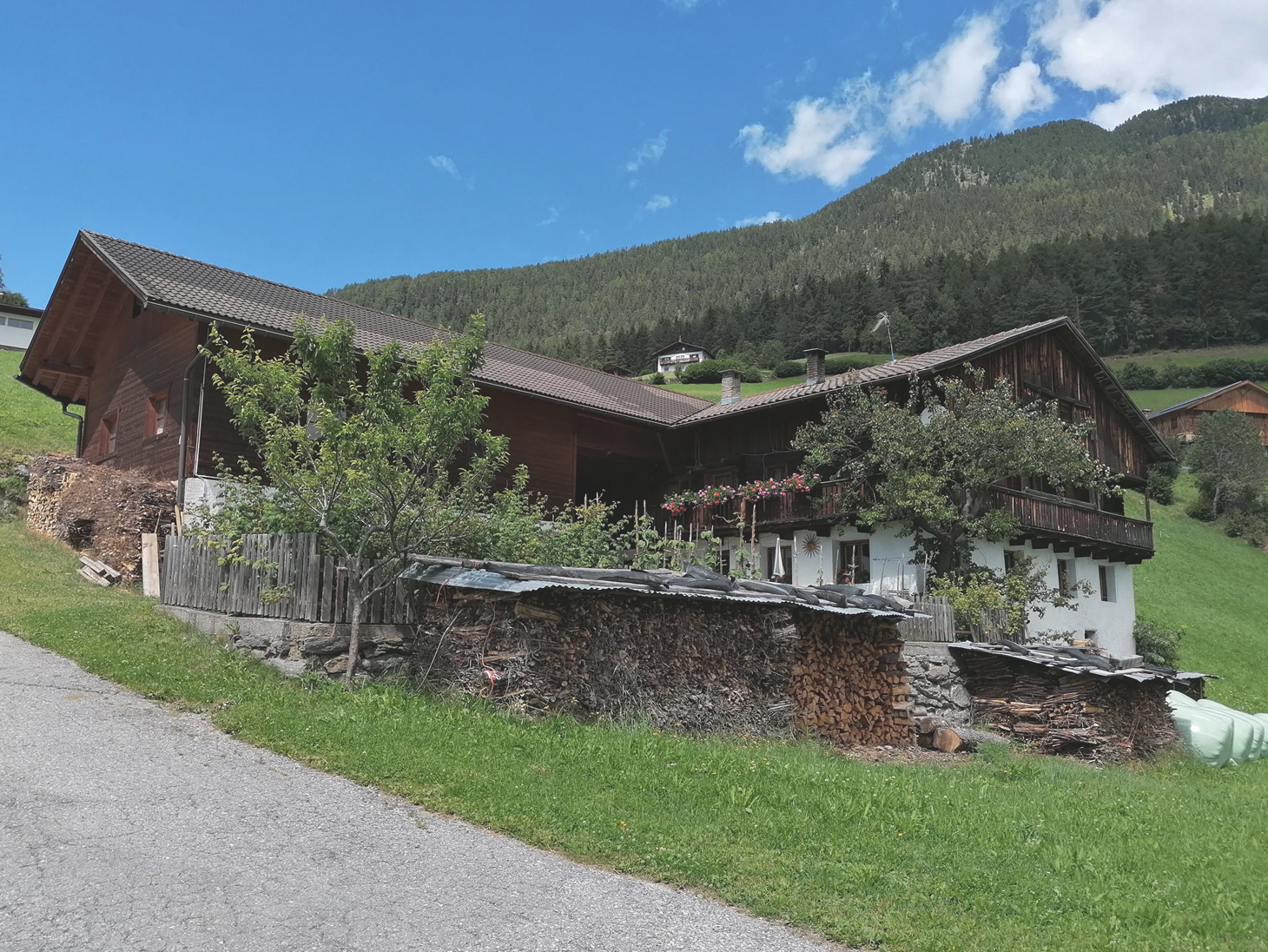
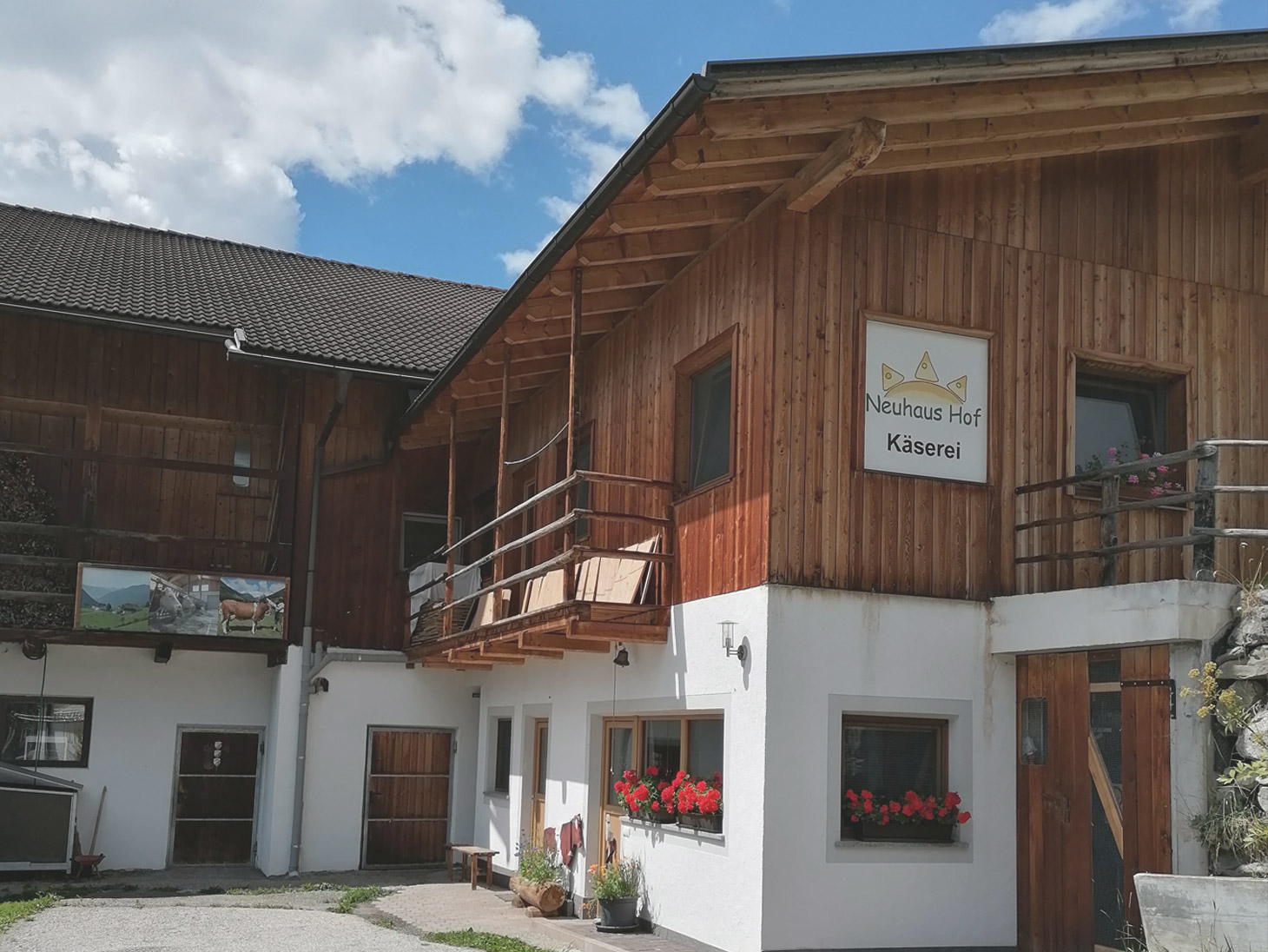 WHAT ABOUT MASO?
WHAT ABOUT MASO?
The History
Maso was born between the XII and XIII century; it is actually a farm with a stable, a barn, a small room for the production of cheese, and the parlour, a single or multi-room used as a bedroom/living room for the farmers and their family. The farm is surrounded by large meadows, woods and fields which constitute a unique property.
The socio-economic role
It is a completely self-sufficient farm both for the food production and for the bovine’s livelihood and the parlour. Nowadays, in South-Tyrol there are more than 20.000 masi, most of these are “closed farm” and it means that they are an indivisible property that can’t be fragmented during generational shifts; this secular law was born to prevent the structural depletion of maso.
Curiosity
Maso farms have created a network all together for a few years and now they provide a really good tourist offering, drive by Gallo Rosso (literally red rooster) project. That permitted to gain new resouces fundamental for the renovation and maintenance of the structures and of the surroundings.
In the last year, we started to look at the entity of the maso with curiosity, and we decided to create a specific selection project which could grow over the next two years. Today we show you our latest discovery! 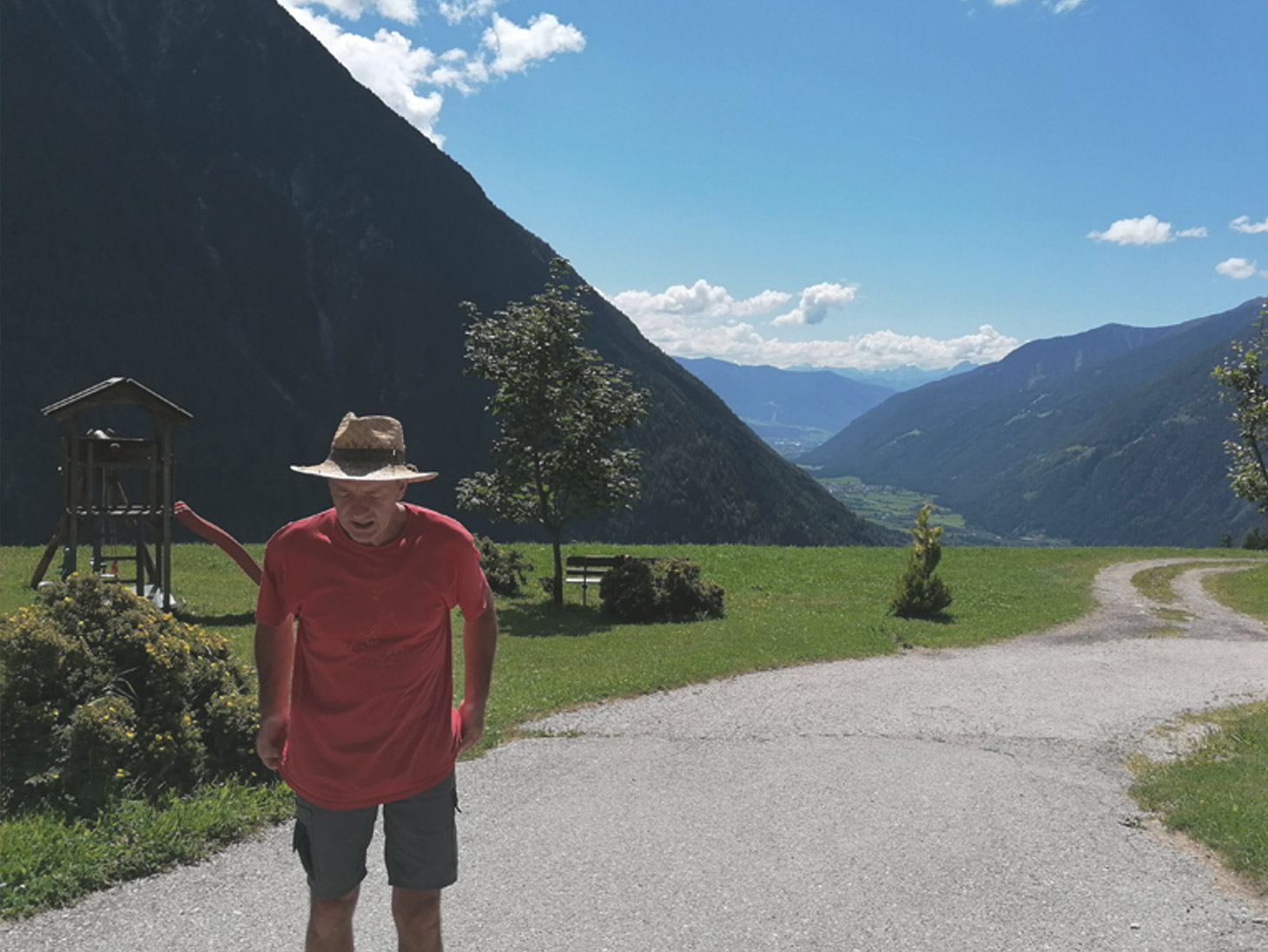 THE WEITLANER FAMILY
THE WEITLANER FAMILY
We have already learned that behind the maso there is always a family, who hands down the entire property from one generation to another, who keeps the owned land and through it produces a large variety of products.
Today we tell you the story of Kristel and Lambert Weitlaner and their maso Neuhaus Hof in Acereto (BZ). The village is located at 1350 meters above sea level and it is literally located above the more famous Campo Tures
THE PRODUCTION
The Weitlaner family produces washed rind cow’s milk cheeses, strictly from raw milk.
They are cheeses that, at the first taste, made us rediscover those pure and sincere flavours of small mountain cheeses: sweetness, buttery sensations, but also intensity and notes of a humid cellar.
We knew them thanks to Karl Bernardi and in the last August, we decided to visit their farm, where we discovered a small ancient world made of rurality, peasant spirit, cleanliness and organization.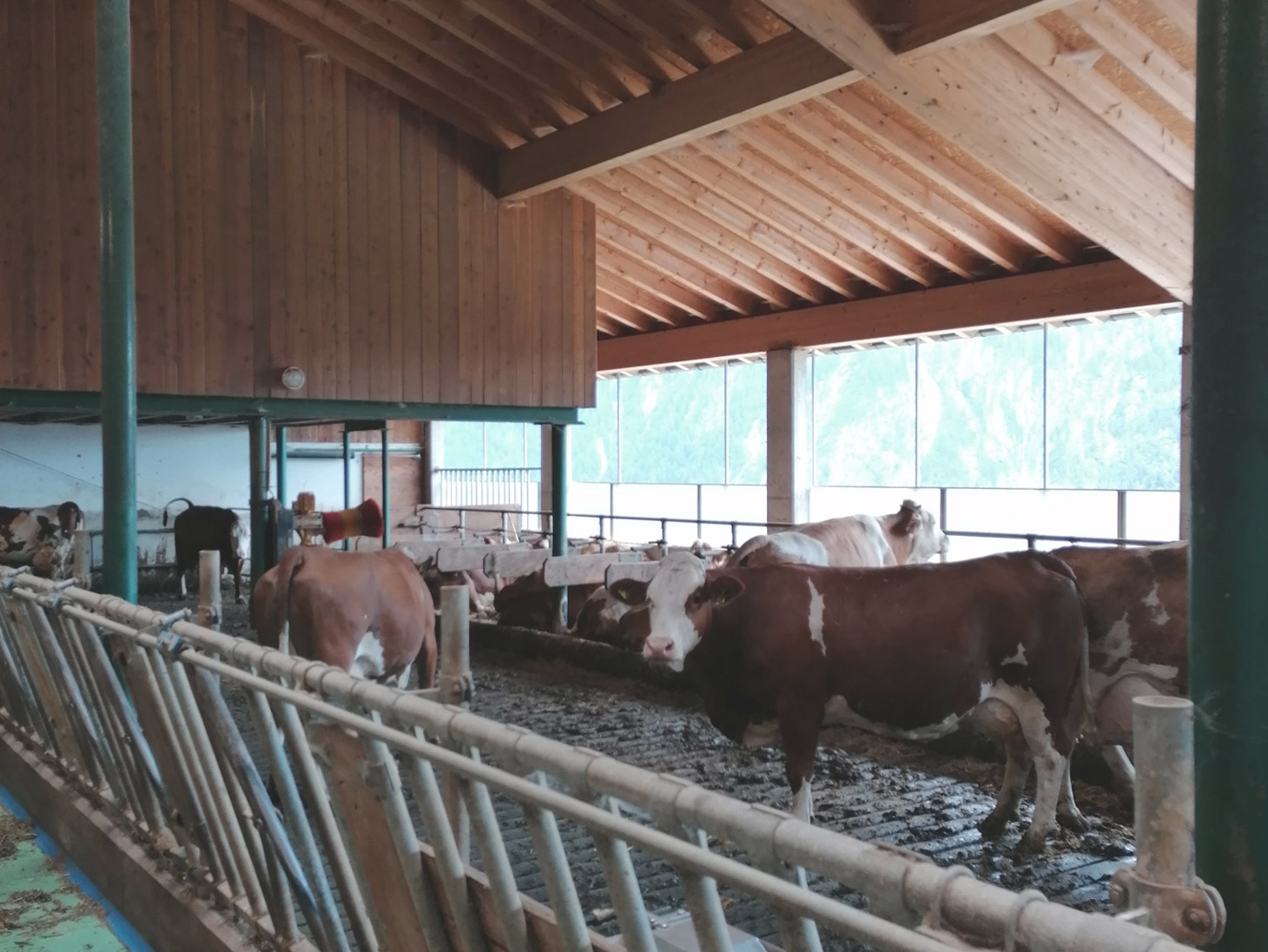 THE PRODUCTION CHAIN
THE PRODUCTION CHAIN
We look at their production chain, and at the beginning we find the meadows of property, where their 20 Pezzata Rossa and Pinzgau cows graze, and from where they get the hay that will be used to feed the cows in winter.
These pastures are rather steep and that is why the cows graze on alternate days even during the summer. At the same time, it is possible to make two or three cuts of hay, which is stored in the drying room above the small dairy.
The “L” -shaped structure hosts everything necessary for the production and sale of cheese: a recently renewed barn, a small dairy, an aging cellar and the shop, as well as a machinery shed and a dryer.
Lambert and Kristel tell us about their idea of cheese.
After years of work as a cheesemaker for Latteria Tre Cime, Lambert decided to go back to work in the family farm and regain the contact with a self-produced milk, of the highest quality and raw processed. Kristel deals with the sale of cheeses and the management of the accommodation area of the farm.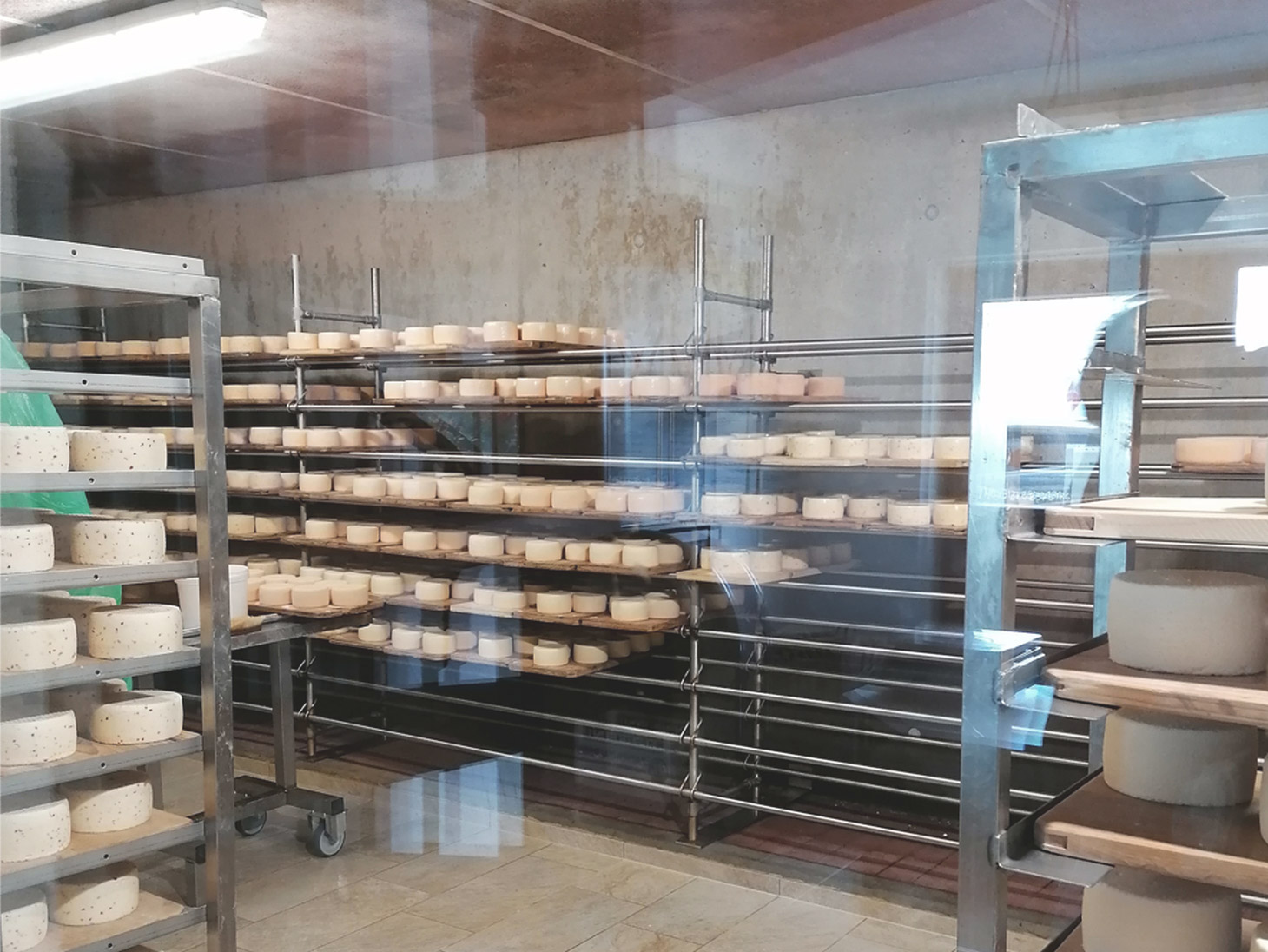 THE CHEESES
THE CHEESES
The cheeses we have chosen are all small, semi-cooked and with washed rind; the washing treatment is done with water and salt a couple of times a week. The aging cellar and the wooden boards where the cheese rests, do the rest. We present them to you in detail below.
RUSTICO-URKAS
Small cheese of about 600 grams, aged for at least 4 weeks.
The paste is compact but melting. More and more yielding as the maturations progresses. The rind has the classic orange and smooth appearance.
On the palate, it is sweet, buttery, with well-balanced sapidity. Notes of pasture flowers, cooked butter and cellar characterize it. On the nose, it is quite incisive and consistent with what we find on the palate.
BÄRLAUCHKÄSE
Normally we are very cautious with flavoured cheeses, but this is really well done; the presence of wild garlic is well balanced and does not push too much.
A tasty cheese which, in addition to its sweetness, has an evident garlicky and herbaceous note.
LAMBERT'S KÄSE
Cheese of about 900 grams, with a slightly smaller heel than the others and with a larger diameter.
More delicate to the nose and with a firm paste, it reaches the optimal maturation when it is at least 8 weeks old.
Then you find buttery sensations and pleasant sweetness, combined with milder hints of cellar and fresh grass.
These cheeses, thanks to their size, allow an easy rotation; they are excellent both to enrich the proposal of cheeses over the counter, but also to give a mountain touch to a cheese board, a fondue or a baked potato.
Alessandro De Conto
Commercial Manager



